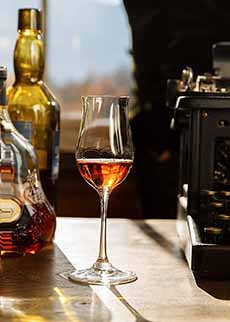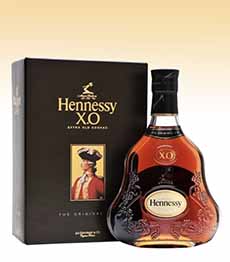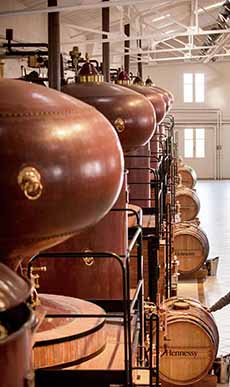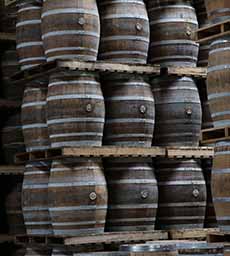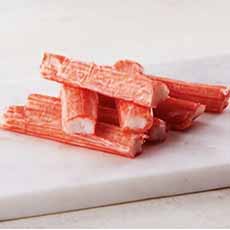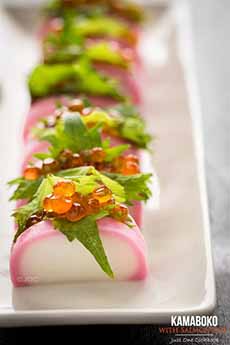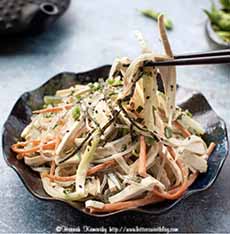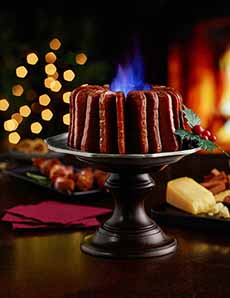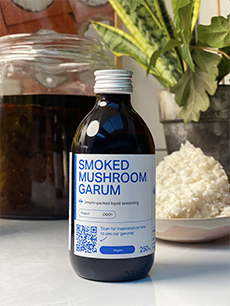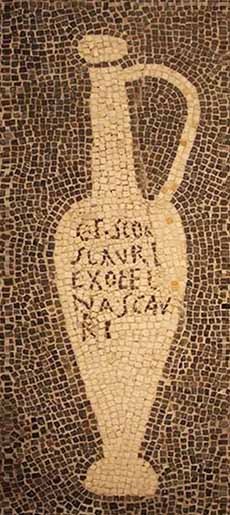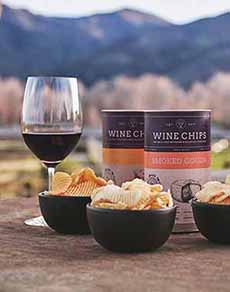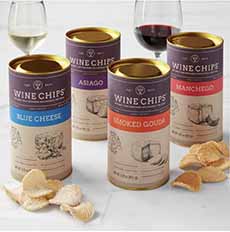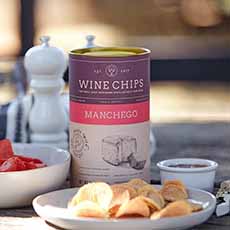|
There’s Cognac, and there’s Cognac. At the top of any Cognac drinker’s wish list is a bottle of Hennessy XO (Extra Old), now available in a holiday gift set (photo #2).
For the 2022 holiday season, Hennessy X.O is presented in a bold and stylish package, making the outside of the gift as appealing as the beautiful bottle inside.
This Limited Edition is in a rose-gold copper metallic gift tin. It comes with a matching copper metallic ice stamp, for embossing the Hennessy logo in your ice cubes. (Embossed ice cubes are a swanky restaurant trend.)
Everything else aside, the flavor of this beautiful amber liquid is a rare treat, deep and powerful. One sip leaves you contemplating the aroma, the nuances on your palate, and the exquisite finish‡.
Hennessy X.O Cognac is aged in young barrels‡‡ that help to create its luscious roundness. It’s a dream gift for a Cognac lover, perfected over 150 years by the Hennessy family and meant to be enjoyed on special occasions.
Richly complex, with layers of fruit, spice, and chocolate**, it is a blend of 100 aged eaux-de-vie* from the Grande and Petite Champagne, Borderies and Fins Bois regions [source].
Hennessy X.O is best enjoyed neat or on the rocks.
The suggested retail price is $255. It will be at retailers in December.
> What is Cognac.
> The different expressions (varieties) of Cognac.
> The history of Cognac.
> The history of Maison Hennessy is below.
> Discover more on the Hennessy website.
> Why do we capitalize Cognac? Because it’s a proper noun, the name of a city (like Paris or Chicago).
> National Cognac Day is June 4th.
WHAT IS XO COGNAC?
Let’s go back to the very beginning of XO Cognac.
In 1870, founder Richard Hennessy’s grandson Maurice created Hennessy XO for his family and friends. It was a new style of Cognac to be appreciated by connoisseurs: more bold, rich, and complex than his “house” Cognac.
Yes, Hennessy X.O is the original XO Cognac, Maurice, and his master blender (also known as the cellar master). The style was emulated by other Cognac houses. XO became the “gold standard” by which Cognac houses are typically judged.
XO, “Extra Old” describes a Cognac made with eaux-de-vie* that have been aged in oak barrels for a minimum of 10 years†. Hennessy XO is made from eaux-de-vie that are 15 and 20 years old (sometimes older, per the selection of the master blender).
By comparison, the law requires that VS Cognac (Very Special) be aged for a minimum of two years, and VSOP (Very Superior Old Pale) be aged for a minimum of four.
However, most Cognacs are aged longer than the law specifies, depending on the palate of the master blender of each individual producer.
Most Cognacs are a blend of eaux de vie, the oldest of which can be decades old. (Most houses still have barrels of Cognac dating back to the 19th century sitting in their cellars waiting for fine blending by the cellar master [source].
Each producer determines the “added age” beyond that required by law.
VS and VSOP are great “starter Cognacs,” and a VSOP is often the “house Cognac” of many people.
But they can’t touch the silky smoothness and complexity of XO.
And by the way, all Cognac is brandy, but not all brandy is Cognac. Brandy can be made anywhere in the world; Cognac is a protected name (PDO) that can only be made in the environs of the city of Cognac.
Why does a French product like Cognac use English terms like “Very Special” and “Extra Old?” In the early days of Cognac production, the British were the main consumers and also became some of the main producers of Cognac, using techniques they acquired from the distillation of Scotch whisky.
ABOUT MAISON HENNESSY
In the 18th century, an Irish Jacobite officer in the service of King Louis XV of France, Richard Hennessy (1724–1800), retired from the army to begin the next phase of his life.
He traveled to the Charente (a department in southwestern France) and the town of Cognac, which had developed as a center for the production of wine and brandy. He began training as a merchant.
In 1765 he founded his own distillery and began distilling and exporting brandies, first to Great Britain and his native Ireland, closely followed by the U.S. His army connections led to the arrival of his Cognac in the French court.
Hennessy became the world’s leading exporter of brandy in the 1840s, a status it has never lost [source]. By 1860, it produced one out of every four bottles of Cognac sold internationally.
Hennessy also created several of the conventions now used across the Cognac industry.
It was one of the first marques (brands) to sell bottles rather than casks of Cognac.
It was the first Cognac house to use star ratings, and the gradings VSOP and XO.
The VSOP designation was created in 1817 when the Prince Regent (later King George IV) of Great Britain asked Hennessy to create a “very superior old pale” Cognac, a description that had previously been applied to sherries.
Skipping ahead to the present: In 1971 Hennessy merged with Moët et Chandon, to create Moët Hennessy, followed by the 1987 merger of Moët Hennessy with Louis Vuitton, creating the world’s largest luxury brand conglomerate: Louis Vuitton Moët-Hennessy, or LVMH.
Today it is co-owned by LVMH (66%) and Diageo (34%).
Yet, Maison Hennessy remains a family-run distillery, passed on from generation to generation for 257 years.
________________
*Eau-de-vie (oh duh VEE) means “water of life”; the plural is eaux de vie. It is a French term for either:
(1) Brandies made from a fruit other than grapes (e.g. Poire William (pear), Framboise (raspberry), Kirsch (cherry), and Slivovitz (Central and Eastern European plum brandy). Eau de vie distilled from apples is called apple brandy; Calvados is an apple brandy made in the Normandy region of France.
(2) The term “eau de vie” is also used (confusingly) for young brandy made from grapes, that will become Cognac and Armagnac once it has matured.
**If you’re a super-taster, you’ll find woody (oaky), spicy, and leather aromas, with spice, toffee, chocolate, nuts, and dried fruit (figs, prunes) on the palate.
†In 2018, the Bureau National Interprofessionnel du Cognac (BNIC) increased the minimum XO Cognac age for the youngest eau-de-vie from six to ten years, in an effort to improve the quality of the spirit across all brands [source].
‡Finish is wine terminology for aftertaste, the flavors that linger on your palate after the beverage or food has been consumed.
‡‡The wood of young barrels delivers more mellowness to the spirit and adds nut-like tones. Barrels that have been re-used many times and no longer have any flavor to give.
|

